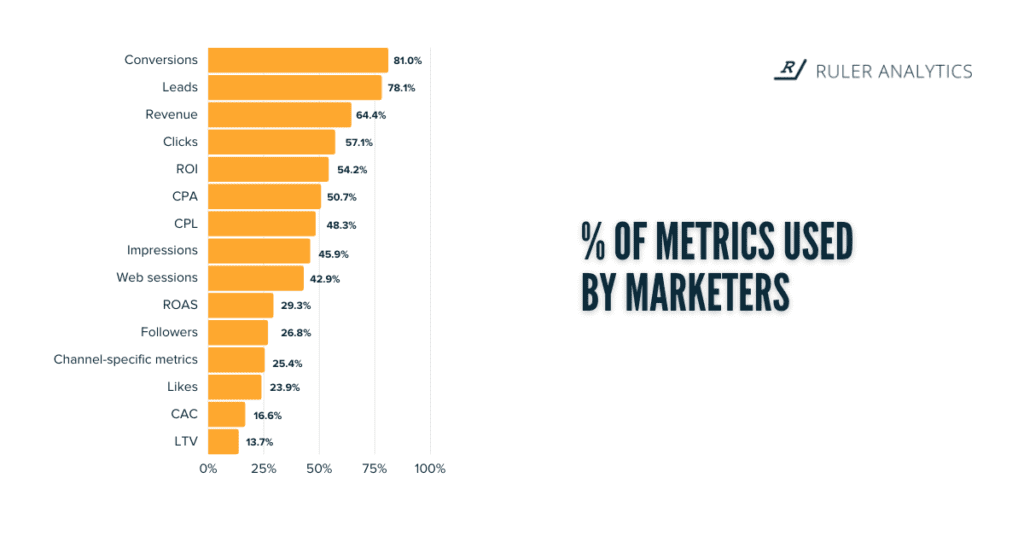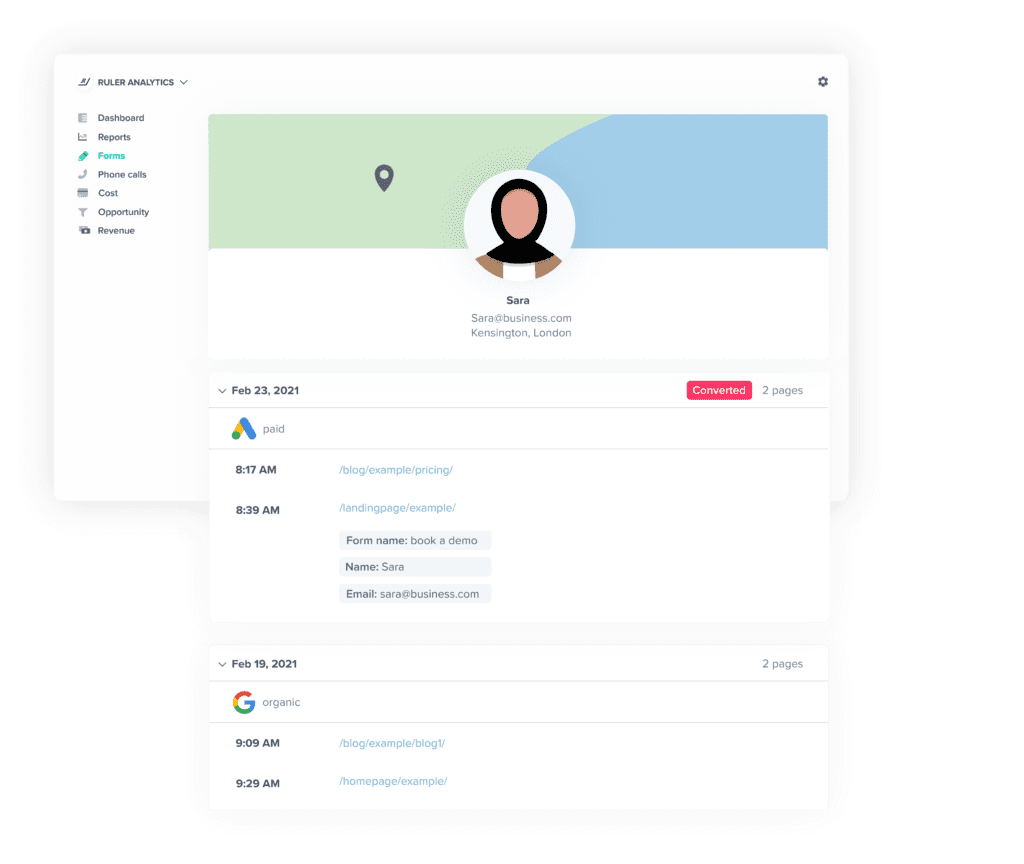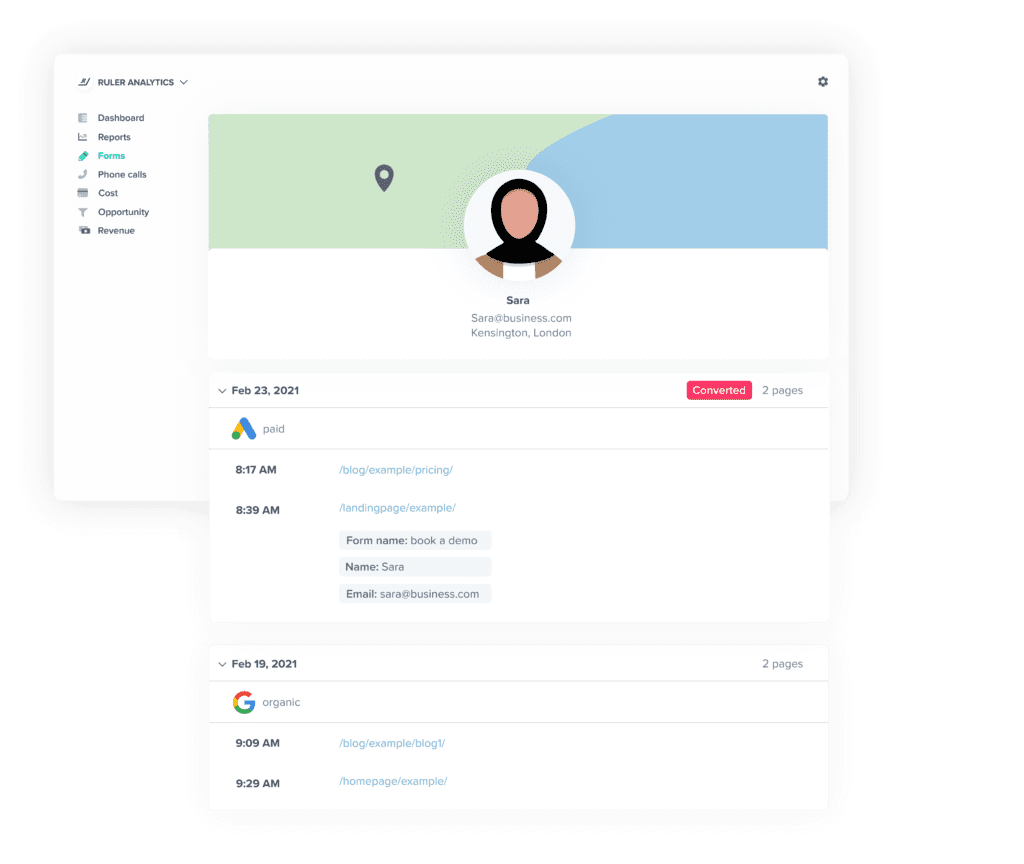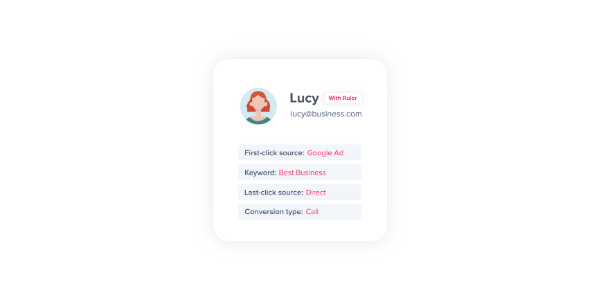Learn how to attribute revenue to your marketing using Ruler Analytics so that you can better understand the impact your efforts are having on your bottom line.
Marketing attribution is a must-have tool for any marketer looking to go above and beyond. Ruler attributes revenue for businesses across the world struggling to connect their closed sales back to their online and offline activity.
Driving new leads is one challenge. Driving high-quality leads is even more challenging. But essential.
We recently found as many as 40% of marketers don’t use a marketing attribution tool.
Note
Did you know just 1 in 5,000 marketers list themselves as being skilled in attribution on LinkedIn? We set ourselves a mission to change that. Check out Attribution Academy, a FREE e-learning platform that supports marketers to develop their skills.
We also found that 62% of marketers who use inbound calls, struggle to track them. And we aren’t surprised. Tracking the volume of calls is one thing. But viewing them as part of a wider customer journey is another.
Keep reading to learn more about how Ruler can:
Let’s get started!
What are you currently tracking when it comes to your marketing?
Our recent survey found conversions was the highest tracked metric by marketers, with over 80% tracking them.

But with so many metrics to track, it’s easy to lose sight of what’s really important in marketing.
Realistically, that’s meaningful actions taken on your website.
Because how can you connect anonymous interactions on your website without individual leads in your CRM?
After all, Google Analytics doesn’t offer visitor-level analytics. It groups users into batches and gives you averages.
Related: Limitations of Google Analytics
This is great for understanding the power of your website in terms of engagement, but how can you get deeper detail?
With Ruler Analytics in place, you can track interactions, track leads and view full customer journeys.
Let’s use an example to explain how Ruler can track interactions on your site.
Sara clicks on a PPC ad you set live and engages with your website. As Sara is a new visitor to your website, Ruler scrapes her data including valuable marketing details like:
Sara returns to your site a few days later via a Facebook remarketing advert. Again, she engages with your content but she doesn’t convert.
Ruler, however, remembers Sara from her last session and collects her engagement data. It’s added to the data from her first session.

Ruler will continue to track session and marketing data for visitors until they convert.
In our example, Sara returns for the third time via an organic search. After viewing your product pages or blogs, she converts via a form fill.
Related: How Ruler tracks where your leads are coming from
She submits a form requesting a callback from one of your team members.

At this point, Ruler connects to your CRM. Whether it’s Hubspot, Salesforce, Pipedrive or another, Ruler will fire all of the data held on that brand new lead over.
So, for Sara, her data will be fired to your CRM.
Let’s say you use Salesforce.
Now, when you look at Sara in your CRM, you’ll be able to see her lead source data and that she submitted a form. Ordinarily, you’d get a form submission and have no other data.


Related: How to send lead source to your CRM
It doesn’t end there! Sara ends up converting during her callback. But not all leads convert straight away. And it can often take months for them to close.
Pro Tip
There’s a lot of data that goes missing for marketers. That’s why it’s important to have a tool in place that captures what you need.
Learn everything you can discover in Ruler Analytics
Take Jamal for example. He engaged with your website twice before converting into a lead by downloading gated content.


But it took a further two sessions for him to close into a sale, via phone call.


When Jamal converts into a lead, Ruler won’t stop tracking him and his interactions with your website.
In fact, Ruler won’t stop tracking Jamal even after he’s closed into a sale. You’ll be able to see data points for your leads and customers no matter how many touchpoints they have with your website.
By logging into Ruler’s app, you’ll be able to see their full customer journey. Remember Sara? Here’s what she would look like at the point of conversion in Ruler.


👉 Book a demo to see our customer journey feature
We already touched on it, but when leads convert, you can send all the data Ruler holds on that user to your CRM (or wherever you’re storing your lead data).
Whether you’re using Salesforce, Pipedrive, HubSpot or Microsoft Dynamics, you can plug in marketing data that you usually miss out on.
Let’s look into what exactly you can get into your CRM thanks to Ruler’s integration.
Ever look at your CRM and think, “this lead source data doesn’t look right”? Or perhaps you get ‘direct’ as a lead source more times than you’d care for?
And we can’t blame you. It’s a vital piece of marketing intel. But you have to consider long customer journeys, the unreliability of customers to know where they heard of you first and challenges with a sales team who want to increase their close rate.
Related: Tips to improve your sales and marketing alignment
All of this can lead to unreliable lead sources. But not when you use Ruler.
Since we track the full customer journey, we can ensure the first-click lead source is sent to your CRM so you can analyse which sources are working to drive more leads.
Let’s use some examples to fully explain how Ruler works here.
John becomes a lead by calling your business. Even if you do have call tracking, the session he calls you from is a direct referral. So that doesn’t tell your marketing team much about how he found you.
With Ruler, you’ll be able to see his first interaction with you was actually via organic search. And, if you log into Ruler itself, you’ll be able to see his full customer journey, which looks a little like this.


Lucy also called you following a direct search. Again, this doesn’t tell you very much about where Lucy found you or what convinced her to convert.
But, with Ruler, you can see her full customer journey. And so you would be able to see that her first touchpoint was actually a paid advert which helps you understand paid’s role in driving new leads.


So now we’re tracking our leads properly. But what about when those leads close to sales?
Well, this is where Ruler’s closed-loop reporting comes in to save the day.
Pro Tip
Learn more about closed-loop marketing attribution and what it means with our complete guide. You will discover how easy it is to track users from end to end and report on the metric that matters most: revenue.
Now, your leads are in your CRM and it’s up to your sales team to close them. Let’s revisit some of our examples.
Here’s Sara’s customer journey. Let’s say she converts into £3,000 of revenue.



As soon as that revenue is updated against Sara in your CRM, Ruler gets to work. It will scrape the revenue data and fire it to your analytics tools. Then, Ruler attributes revenue back to the marketing channels that played a role in her customer journey.
Related: How to forecast and track revenue using Ruler
In Sara’s case, Google Ads, Facebook Ads and organic Google will all receive a split of the credit (depending on your attribution model).
And this is how it works for all of your leads: no matter what attribution model type you’re using, whether you’re using Ruler to view your data or you’d prefer to use Google Analytics or your native ad platform.
Pro Tip
With data like this in place, you have the power to make data-driven decisions that can really impact your performance.
Learn how Ruler can help you optimise your marketing strategy.
There you have it! How Ruler attributes revenue back to your marketing campaigns and channels.
We’ve got this handy infographic that explains how Ruler works, in case you needed a recap.


Remember, the trick to Ruler is setting up first-party data tracking on your site. That means you can continue to track users and their marketing data no matter any changes to data and privacy.
Using data, we put the power in our customers hands. Take Propel Digital who use Ruler to scale up their monthly fee for clients. Or Circleloop that use Ruler Analytics to get a single source of truth for their data.
Related: How businesses use Ruler to prove their ROI
Take your marketing to the next level by integrating Ruler into your marketing stack. You can book a demo to see all the data in action. Our experts will show you all of the reports available to you.
Get ready to start making smarter decisions on your marketing. Or, if you’re still not sold, learn exactly why you need Ruler in your tech stack.